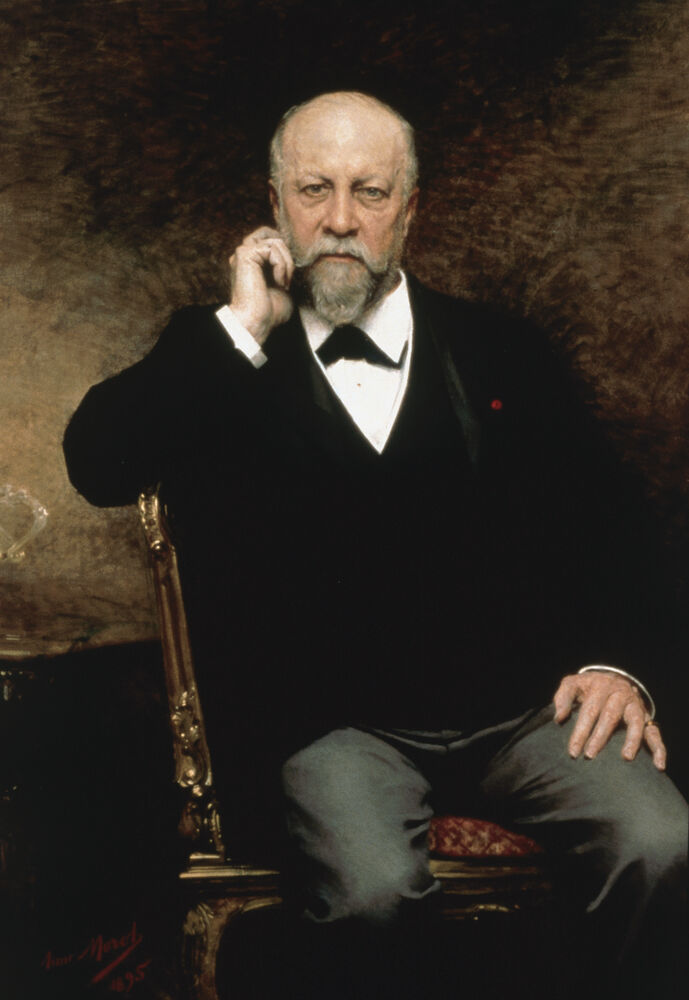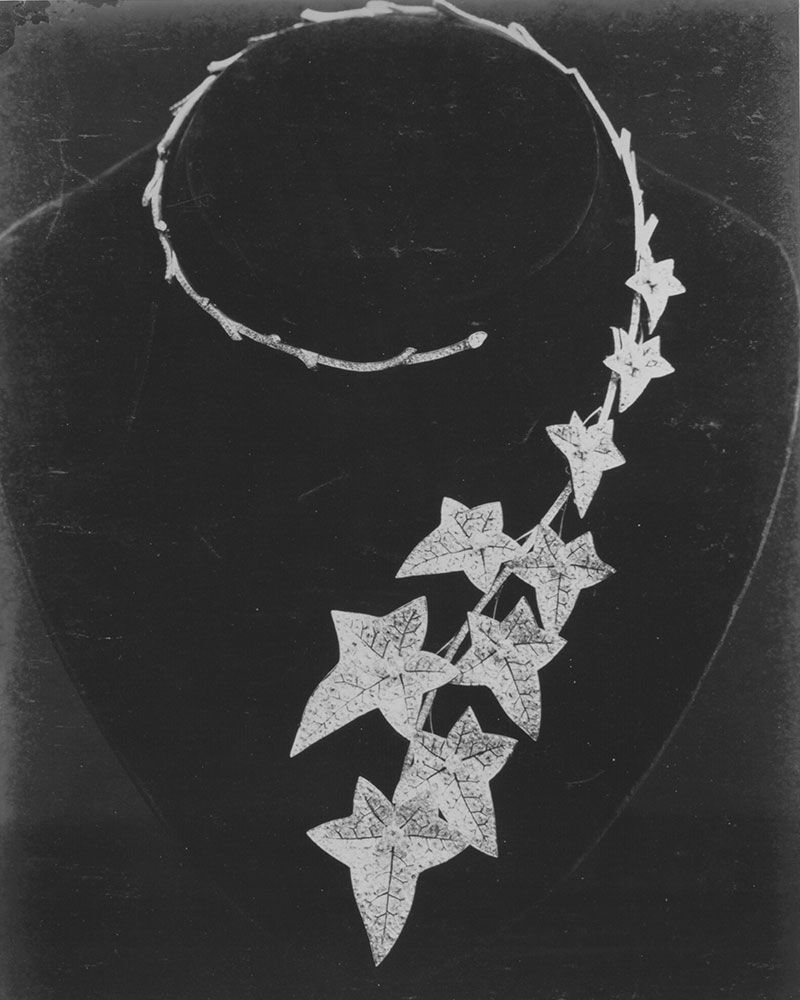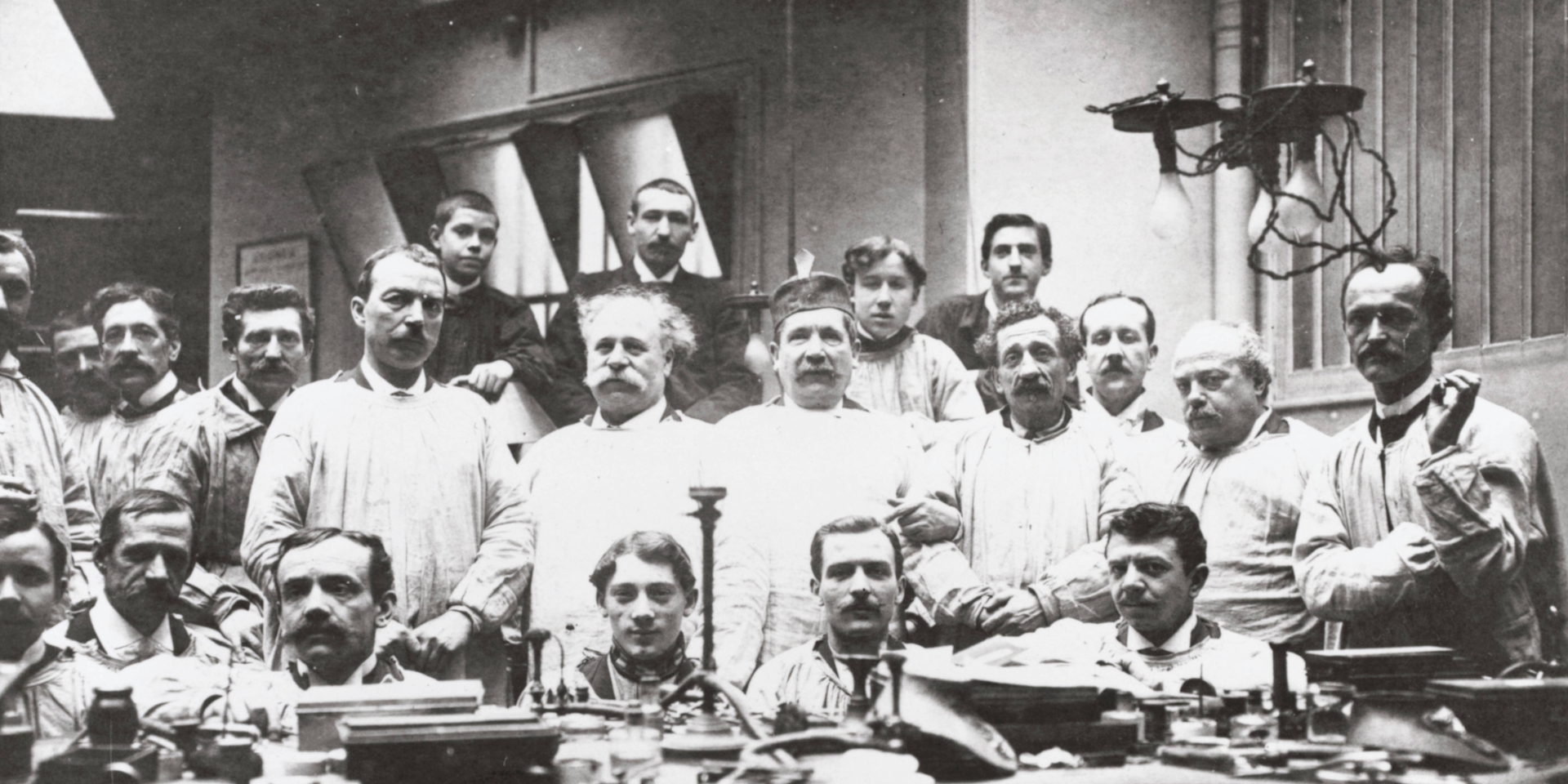Should you wish to receive your creations by December 23rd, we recommend that you place your order before December 17th.

Change country/region


Portrait of Frédéric Boucheron by Aimé Morot in 1895
The son of a cloth merchant, Frédéric Boucheron broke with family tradition and turned to jewelry-making at the age of 14. He apprenticed with Jules Chaise in Paris to learn the trade, before becoming a clerk and then a salesman at Tixier-Deschamps in the Palais Royal. Two remarkable jewelers of their time.
In 1858, he sets up his own business in one of the highly sought-after boutiques of the Palais Royal. Coming from a family of drapers, Frédéric Boucheron reinvents the codes of jewelry. At a time when all jewelers are focused on stones, Frédéric Boucheron approaches creation through the prism of wearability. In the early days, he offers a selection of art objects and jewelry creations and gives customers style advice. Unlike competing window displays, which show their jewelry pieces laid flat and in their cases, Frédéric Boucheron displays his pieces vertically, allowing passers-by to envision them being worn. A resounding success, within a few years of opening Boucheron has to expand. Better still, in 1866, Frédéric Boucheron registers his hallmark and opens a workshop to manufacture his own creations. He surrounds himself with the finest master jewelers and artisans. That's when Boucheron became Maison Boucheron.


Ivy Question Mark Necklace, 1881
Frédéric Boucheron is a man who always sought to push the boundaries of jewelrymaking. He draws inspiration from everything around him to conceive new creations. The supple fabrics and ribbons of his childhood, the poetry of nature that fascinates him, or women in constant search of originality and modernity. Everything is jewelry material. He revives old techniques and forgotten materials such as rock crystal, enamel and engraved diamonds, and creates unexpected combinations of gold, wood, mother-of-pearl, enamel, or hard stones.
In 1879, he designs the first High Jewelry necklace without a clasp: the Question Mark. Consequently, it was the first necklace a lady could put on by herself, at a time when wearing precious jewelry required the help of a third party. This creativity earns him numerous awards, including the Grand Prix at the 1889 Paris Universal Exhibition.
In 1887, Frédéric Boucheron seizes a unique opportunity to acquire exceptional stones at the sale of the Crown Diamonds. A collection started by Francis I that lasted until Napoleon III. Frédéric Boucheron was one of the main buyers at this sale organized by the French government. He acquires several lots, including two "Mazarin" diamonds, named after the famous cardinal and gem collector.


Boucheron workshop, circa 1910-1930
Frédéric Boucheron is also bold in his approach to business. Well aware of the value of manpower, he looks after his workers and encourages them to go abroad to learn new techniques. He also provides them with benefits not yet widely available, such as paid vacations, and fosters a friendly atmosphere in the workplace by organizing an annual picnic near Paris, a type of seminar ahead of its time.
He was also the first jeweler to give recognition to his artisans, mentioning their names on his stands at universal exhibitions. He infuses the Maison with a true family spirit, where the artisans' happiness and pride are as precious as the jewels they make.
Frédéric Boucheron would play an active role in improving conditions in the jewelry industry. He is president of the Chambre Syndicale de la Bijouterie and is also actively involved in several associations, such as "La Fraternelle." His actions and donations led to the creation of a pension fund for jewelers and goldsmiths, the foundation of a retirement home, the funding of training courses and the founding of an orphanage.


For many years, the Maison was run by men, but today it's a female-led business.